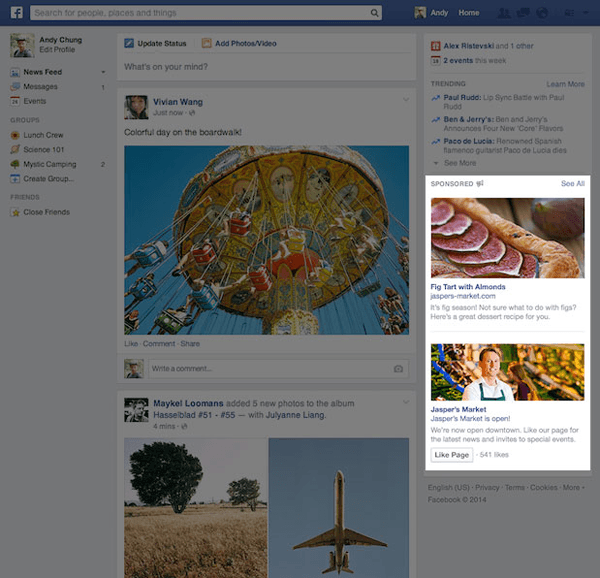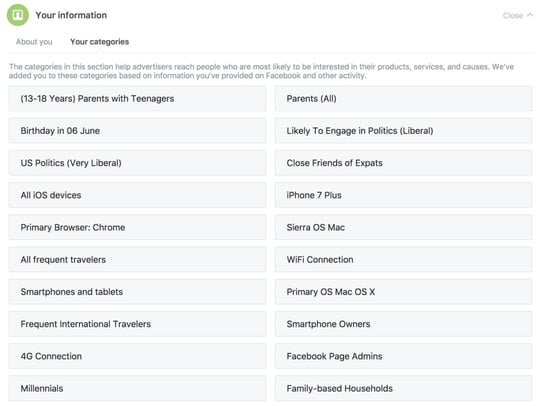30 Ways to Adapt to Facebook's End Game

While it is a feel-good time of the year, marketers do not have much to look forward to when it comes to traditional Facebook marketing in 2018. They can no longer rely on old optimization 'tricks' to boost engagement and earn valuable referral traffic. Facebook has unfriended marketers.
Algorithm update after algorithm update have de-emphasized brands' role ( particularly publishers) on Facebook by limiting news feed exposure, at least when advertising spend is not involved. If that were not enough, more change is on the horizon. Facebook's test of a separate feed for business posts is alarming, and the threat to as-is social media strategy is made more real by the fact Snapchat has redesigned its app to separate "social" from "media."
Snapchat's actual separation of friends from publishers could indicate more networks will follow suit particularly Facebook, which seems to really admire Snapchat already (if imitation is the sincerest form of flattery).
Facebook and Snapchat are very different environments, of course. Snapchat's news feed separation, for example, is made possible by swiping left or right to access social or media content, respectively. For those unfamiliar with the app, it opens to the camera to encourage people to create content versus simply viewing it.
With the redesign, users will swipe to the left from the camera for Chats and Stories (those quick, expiring photos or videos that made the network famous) from friends and swipe to the right from the camera for Stories from publishers, creators and the community. One could imagine only out of boredom would someone swipe right, as swiping left will be all of a person's closest contacts sorted by Snapchat algorithms.
Facebook's potentially separate news feeds, however, could very much resemble Google's search engine result pages of the past. Think of a single page where friends' posts are prioritized based on, once again algorithms, and only brands who pay to be included in this feed will be (see Facebook's comment below).
Where does this put brands? It is possible brands will only appear in the right-hand column. Users, however, have been trained over many, many years to ignore this section, because that's where ads have always been. Look at this screenshot ( via Facebook) from 2014:

Since people know to avoid right-rail ads, Facebook could prove quite clever to push all organic Page content to the right and posts from friends, family and advertisers solely in the main feed where paid advertisers will "live" as well with likely better results than before. Not only will less advertisements be ignored, but people may not be able to distinguish ads from organic content similar to how everything looks the same to them in the search engines or they simply do not care enough to make the distinction.
What, however, happens to brand posts in mobile is up for debate as this right-hand column does not exist within the app where most users access Facebook. Perhaps mobile users would have to expand this column by, well, swiping right like Snapchat or locating business posts and publisher articles from an already overly crowded navigation menu.
For fairness, Facebook has this to say about its tests:
"The goal of this test is to understand if people prefer to have separate places for personal and public content. We will hear what people say about the experience to understand if it's an idea worth pursuing any further. There is no current plan to roll this out beyond these test countries or to charge pages on Facebook to pay for all their distribution in News Feed or Explore. Unfortunately, some have mistakenly made that interpretation - but that was not our intention."
Call us cynical, but Facebook has already profited (greatly) from limited organic reach. Buzzsumo reported in Aug. 2017, "The average number of engagements with Facebook posts created by brands and publishers has fallen by over 20 percent since January 2017."
Not so coincidentally, Facebook's third quarter 2017 results indicate advertising revenue is up 49 percent (year over year). Facebook invests in a platform that collects hyper-specific user data to allow advertisers to target potential customers in a hyper-specific manner. That's really it, friends.
We all share information on Facebook, Facebook relies on us sharing and Facebook lets advertisers use this information anonymously (e.g., name, address, friends, interests, political ties, careers). Users are hooked, and brands on Facebook are now just a convenience with the network throwing them a digital bone when they advertise, use new features such as Facebook Live or listen to what the network is telling them like USE VIDEO. 
( Image Source)
When businesses and publishers understand Facebook's end game, they can better realize the strategy needed to reach and communicate with audiences on this channel.
With so much of people's day spent on Facebook, there is no way to simply ignore the network. What marketers need to do, however, is consider Facebook in the same category as they would Google where they can play by the network's rules but ultimately are at their mercy to be visible with their audiences. Let's take a look at 30 different ways to refresh strategy based on Facebook changes.
- Pay attention to algorithm updates and adjust accordingly
- Change strategy based on Facebook's priorities at the moment, such as responding quickly to incoming messages or using Facebook Live
- Use Messenger bots to allow users to take advantage of self-service options like scheduling an appointment or getting quick answers to frequently asked questions
- Budget for the spend needed to reach targeted audiences on the network
- Consider Facebook the Google My Business of the social world where profiles must be completed, reviews must be left and post-click experiences must be optimized for a person's device in order to enjoy some form of visibility on the network
- Use real-time features like Facebook Live and Stories (once the latter is available to Pages) in order to communicate with audiences directly and in the moment, which can spark actual conversation
- Offer Facebook exclusives for customers to encourage them to seek out your brand even if its hidden in the news feed(s)
- Create a Facebook Group and link it to your Page (even better create a separate branded community)
- Enlist industry influencers to speak directly to audiences with less Facebook interference
- Start an employee advocacy program to enable staff members to share news, stories and links (not held back by Page stifling)
- Share links less often, as they receive the lowest engagement and likely the lowest organic reach (why would Facebook want people to leave its app/site?)
- Consider other website traffic referral sources like Medium, Twitter or guest blogging on niche sites
- Create a promotion schedule and content before going Live on Facebook to generate buzz
- Double down on video creation for Facebook as it will likely increase organic reach and engagement.
- Spend the time that used to be allocated to posting daily or multiple times a day on Facebook on personalizing email and website content
- Think of Facebook as an online directory of businesses that needs to be updated in order to appear in search results and as a customer service and inbound channel where people will reach out when they have a problem (be ready to respond)
- Use a service that delivers Facebook ads in the moment a person needs it like an ad for a dentist when someone says their tooth hurts
- Share events on Facebook
- Create a Page call to action so when people do arrive on a Page they know what to do
- Create custom audiences on Facebook using your current email list
- Post jobs to Facebook
- Post events to Facebook
- Respond to reviews on Facebook
- Respond to comments on Facebook
- Optimize for search engine visibility as well since Google has regained its position as the top referral source for publishers
- Boost organic posts that have already been popular on their own
- Use the bull's-eye icon for organic posts to target relevant audiences
- Initiate and maintain real conversations with partners and people
- Turn on your Page's visibility within Facebook Discover
- Check the Insights tab weekly to evaluate what content is reaching people and resonating with them
+ Bonus: Use, yes, but never build a brand entirely on someone else's platform.

Subscribe to Our Newsletter!
Latest in Social Media










